After construction
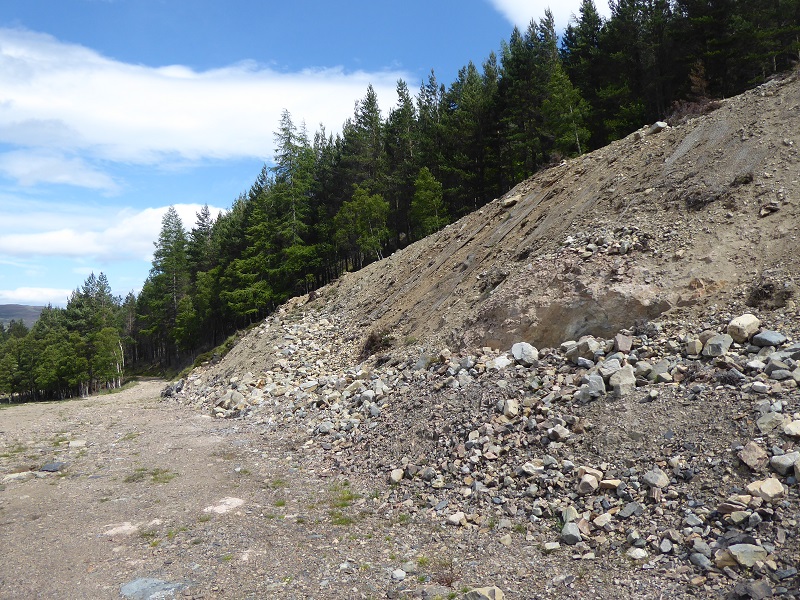
On Monday, I dropped by the Corriemulzie hydro scheme a few kilometres west of Braemar to see what progress had been made on restoring the landscape destruction caused by poor oversight of the contractors who had built the scheme in 2016 (see here). I was pleasantly surprised.
Now
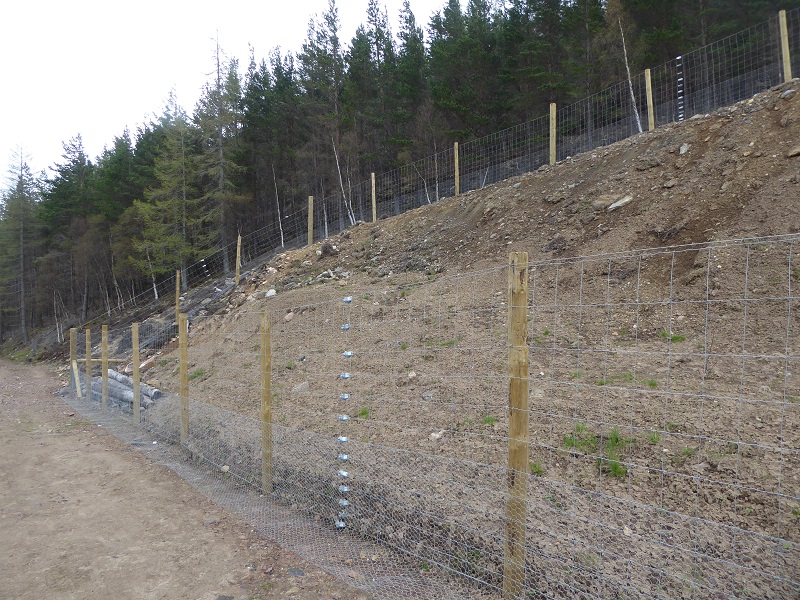
The terrible scar in the top photo has been restored by reducing the angle of the slope – a lesson here for all those bare embankments alongside bulldozed tracks – and by fencing the area in order to keep out deer. My post last July had highlighted how deer footfall was contributing to the problem although this is still an issue at the end of the slope nearest the hydro intake:
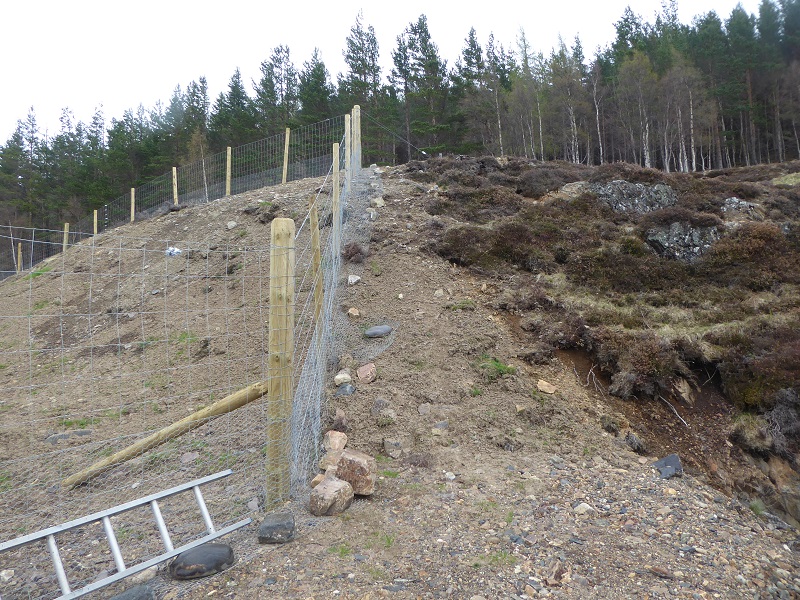
Had the fence been extended a little further it might have prevented this. This slope though will always be vulnerable to erosion – and I hope the fence can eventually be removed – if deer numbers remain as high as they appear to be at present:
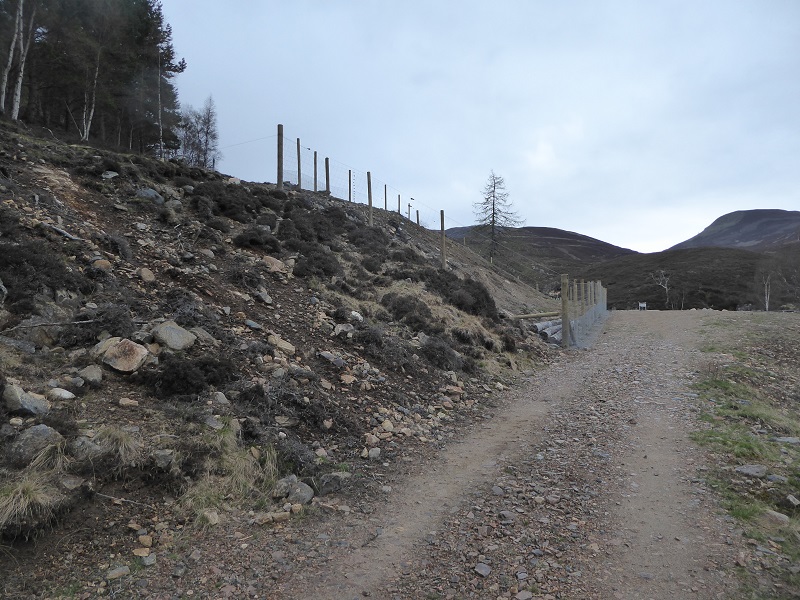
All in all though the restoration of the slope is a considerable improvement on how it appeared before for which the Cairngorms National Park Authority and Braemar Community Hydro should be commended.
There was also plenty of evidence from my visit that a number of other points of concern had been addressed, from removal of rubbish to landscaping of other construction scars:
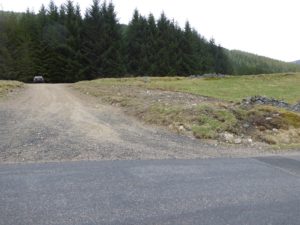
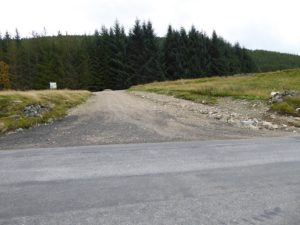
My main remaining landscape concern is that there has still been no effective restoration of the channel which was cut through the rock to divert the burn and enable the hydro to be constructed:
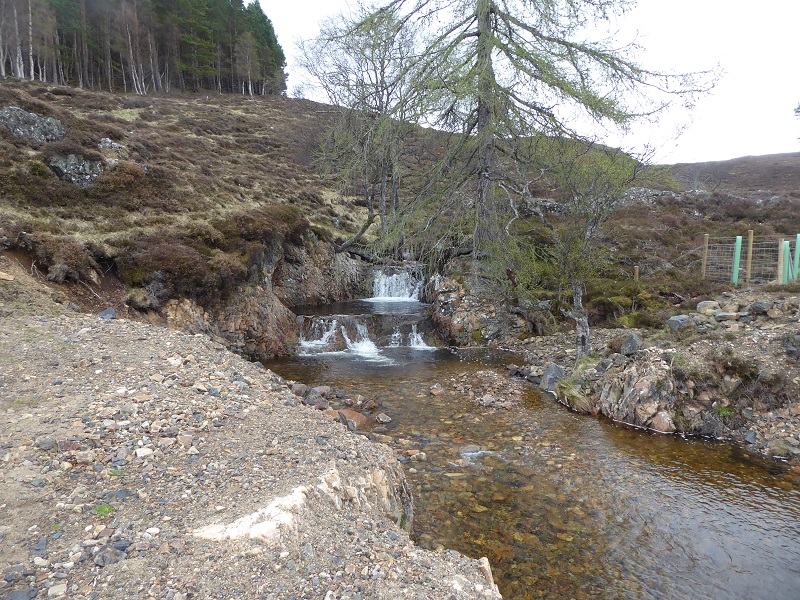
The LLTNPA’s landscape adviser had, in a report on the original proposal, highlighted the potential landscape impact here and unfortunately so far a solution has not apparently been found.
So, what lessons can be learned from the restoration of the Corriemulzie hydro?
In my post last July, I analysed what had gone wrong at Corriemulzie including the apparent lack of detailed documents setting out the construction and landscaping work and the failure to supervise the contractors properly (and the impact of Storm Frank). I had suggested then that lessons should be learned.
While I believe that both the CNPA and Braemar Community Hydro have done a great job in retrieving what was a landscape disaster – there are strong parallels here to what happened at Glen Bruar (see here) and (here) – unfortunately neither body has been open about what has happened let alone so far about what lessons should be learned.
There is very little on the Braemar Community Hydro website or facebook page about what has gone wrong – though lots about the hydro being opened by royalty and being nominated for the community hydro of the year back in 2016 – although I found this in the presentation to the AGM last October:
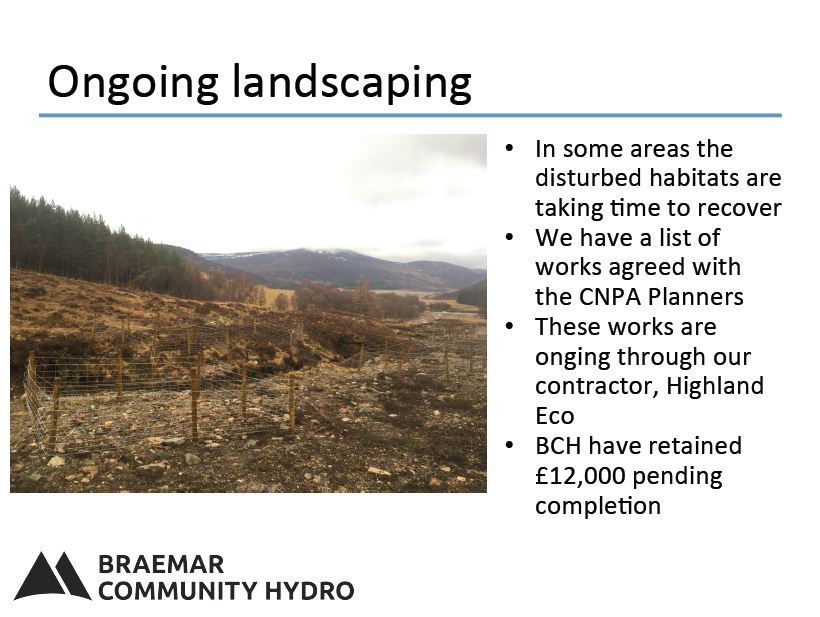
Then, in November, under the news section of the website notification was given that landscape works were underway (see here). But that is about it.
And, as far as CNPA is concerned, while I know there have been extensive discussions and support given to Braemar Community Hydro, nothing further has appeared on the planning portal. Its impossible therefore for the public to tell whether the CNPA is now content with the restoration or not or has identified issues which it believes still need to be addressed.
I think this is a shame. There should be a lot to learn from Corriemulzie, particularly for other community hydro schemes, about the pitfalls involved in hydro construction and how to fix these if they do occur which I think would benefit by being shared. I hope both the CNPA and Braemar Community Hydro will be more open in due course about what went wrong and how they have addressed the issues (accepting that both could be silent because they are fearful of being sued by the contractor).
Meantime, what is clear is that the hydro has from the start being making sufficient money to pay for what landscape restoration is needed. For example at the beginning of 2017 Braemar posted this:
“In the 3 month period the scheme generated 73,820 kWh of electricity with a value to BCH in the region of £18,500. It was a relatively dry autumn. Rainfall measured in Braemar was 209mm compared to an average for this period over the last 50 years of 287mm. Rainfall was therefore only 73% of the ‘expected’ level. Generation was 76% of the projection in the long term forecast. Given that we are required by licence to leave a minimum flow in the burn generation held up reasonably well.”
On 15th April 2018 they had generated 500,000 kw of electricity. Its great Braemar Community Hydro have been using the income from this to fund community projects but this also shows that there is NO excuse for hydro schemes failing to pay for proper measures to ensure effective landscape restoration from the start. Hydro schemes should be using the promise of future income to fund proper supervision of landscape works and restoration during the construction phase and fund Planning Authority Staff to support and monitor this properly instead of allowing problems to develop, as they did at Corriemulzie and Glen Bruar, and responding to these retrospectively.
Postscript
Next weekend as part of Cairngorms Nature weekend there is a guided walk around the hydro scheme (see here) for anyone interested.